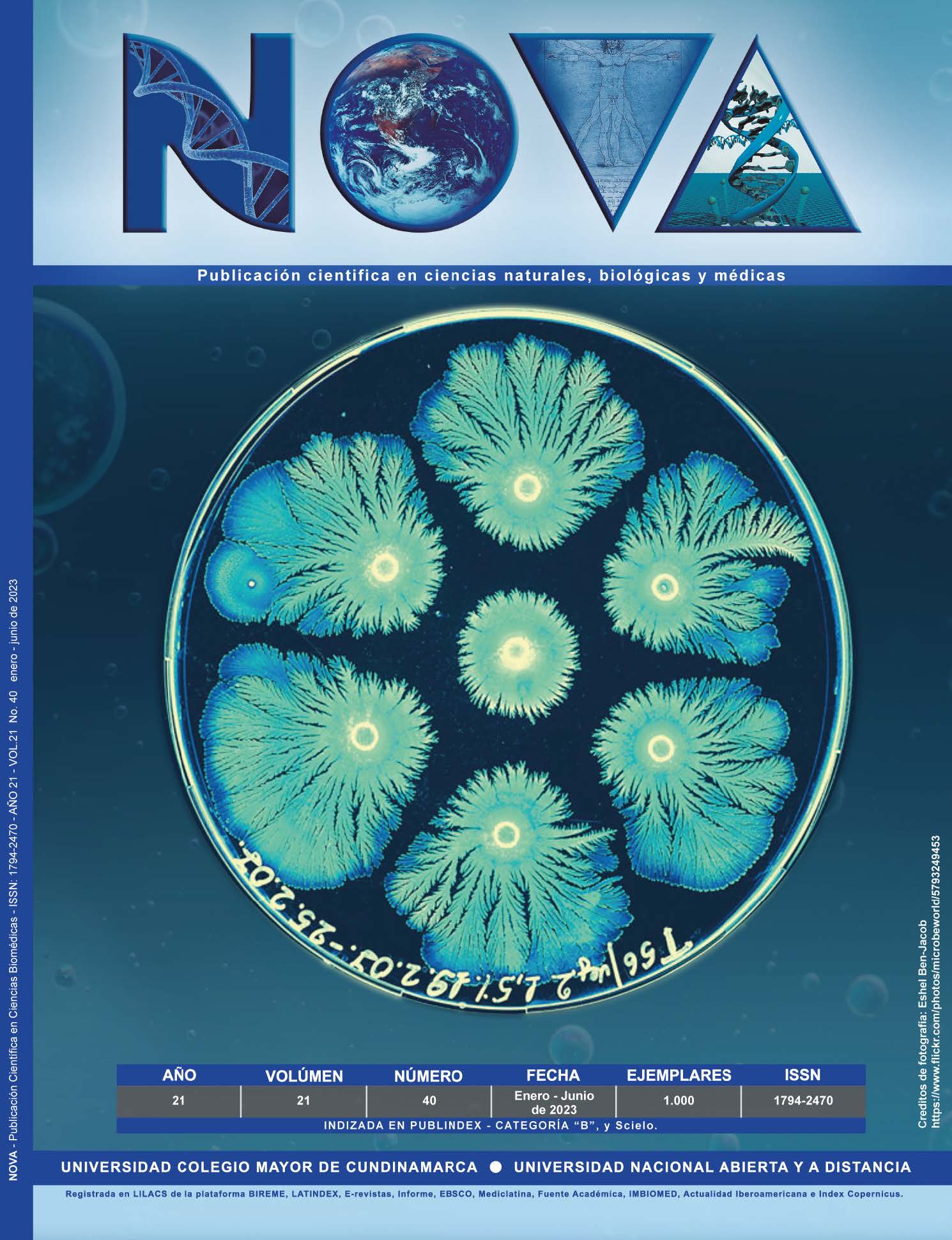Copyright (c) 2023 NOVA Biomedical Sciences Journal

This work is licensed under a Creative Commons Attribution-NonCommercial-NoDerivatives 4.0 International License.
NOVA por http://www.unicolmayor.edu.co/publicaciones/index.php/nova se distribuye bajo una licencia Reconocimiento No Comercial- Compartir igual
Así mismo, los autores mantienen sus derechos de propiedad intelectual sobre los artículos,
Declaración de privacidad.
Los nombres y las direcciones de correo electrónico introducidos en esta revista se usarán exclusivamente para los fines establecidos en ella y no se proporcionarán a terceros o para su uso con otros fines.
Contrast between a mathematical model and the bioreduction process of Cr(VI) by consortia of bacteria isolated from wastewater of the Pasto River
Introduction. The versatile metabolism of microorganisms allows biodegradation of a wide variety of contaminants; however, the increasing scale of the industry exceeds its pollutant processing capacity. Due to its high toxicity, hexavalent chromium Cr(VI) is one of the heavy metals with the greatest global dissemination and concern. There are numerous investigations focused on proposing treatments to purify the different ecosystems affected with this metal; however, knowledge about various microorganisms from the same source that could help solve this problem is restricted. Objective. To evaluate the efficiency in the reduction of Cr(VI) of bacterial consortia (B. thuringiensis, B. amyloliquefaciens and Paenibacillus sp.) in a Batch type treatment, using municipal wastewater from Río Pasto as a substrate. Methodology. A mathematical model was formulated that reliably predicted
the behavior of the consortia, in relation to their growth and reduction percentage, the results of the simulations were compared with experimental data to select the consortium with the best Cr(VI) reduction results). Subsequently, its efficiency in the reduction of Cr(VI) was determined, using unsterilized residual river water as a substrate. Results. The statistical analyzes highlighted the absence of statistically significant differences in the reduction percentages between the consortia. However, with the selected culture, a reduction percentage of 91% was presented in 156 hours. Conclusion. The results found in this research are promising for their application in the improvement of treatment practices for Cr(VI) bioremediation.









